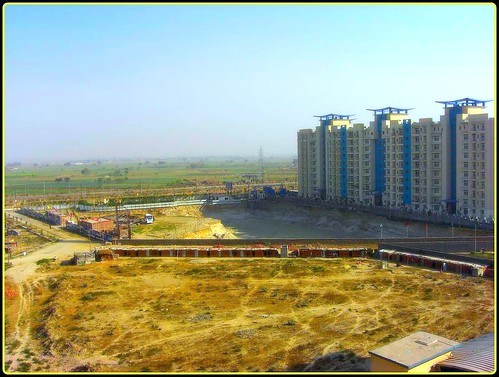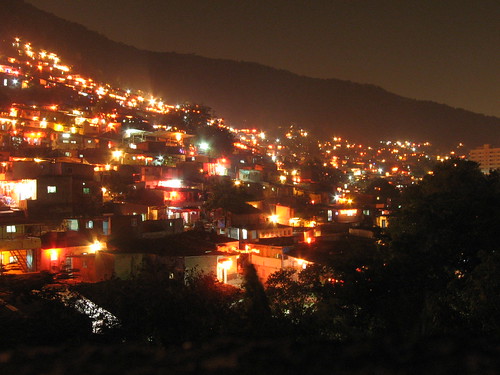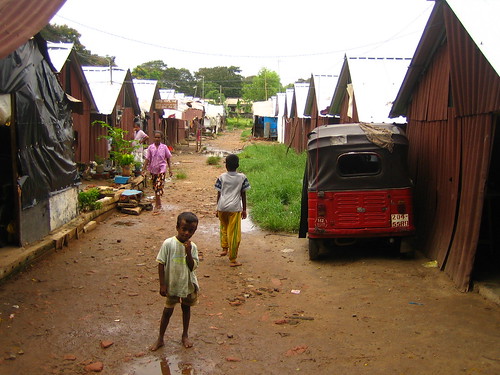Posts tagged population

The World’s Most Typical Person
Mar 7th
The world’s most typical person is male and in terms of the mode average ethnic group, is a Chinese, Han man. His age, in terms of median average is 28. The typical face shown above is built of 190 000 photos of 28 year old ethnic Han men. But as the video tells us, he won’t be the most typical person for long …
As World Population approaches 7 billion, NationalGeographic have created a brilliant infographic-style animation, complete with catchy tune and thought-provoking statistics. (There’s also a healthy qualifier in there – “typical is always relative”).
A great starter for population studies or even for discussions about global inequality, like the World Scaled Down to A Village of 100 idea. It might also have value in Theory Of Knowledge discussions of data and what we mean by ‘typical’ and ‘ethnicity’. There’s even a bit relevant to the economic concept of ‘needs and wants’ at the very end.
Packed full of cross-curricular uses, it is simply a ‘must see’.
Developed and Developing Economies – Online Resources and Revision Materials
Feb 21st
The full title of this section from the IGCSE syllabus is:
‘Developed and developing economies: trends in production, population and living standards’

Image: Some rights reserved by souravdas
Here is what the syllabus requires of us:
Candidates should be able to:
• describe why some countries are classified as developed and others are not;
• recognise and discuss policies to alleviate poverty;
• describe the factors that affect population growth (birth rate, death rate, fertility rate, net migration) and discuss reasons for the different rates of growth in different countries;
• analyse the problems and consequences of these population changes for countries at different stages of development;
• describe the effects of changing size and structure of population on an economy;
• discuss differences in living standards within countries and between countries, both developed and
developing.
![]() There is a lot of overlap between this section of IGCSE Economics syllabus and the Geography (I)GCSE – if you are studying that subject, you will be able to use some of your Geography notes and resources too. Some of the websites given below are Geography revision pages.
There is a lot of overlap between this section of IGCSE Economics syllabus and the Geography (I)GCSE – if you are studying that subject, you will be able to use some of your Geography notes and resources too. Some of the websites given below are Geography revision pages.

Some rights reserved by godwin d
a) describe why some countries are classified as developed and others are not;
Quite a detailed, interactive site: http://bbc.in/hZmNJh
Note: development is bigger than economci growth. Think of economic growth as a key ingredient of development, a sub set of development. This video by geographyalltheway shows us that development can mean a lot of things:
b) recognise and discuss policies to alleviate poverty;
Aid
Fair Trade
mobiuslive posted an excerpt video from eq.tv on fair trade:
And DiagramConsultores gives us this video on Fair Trade in the Domincan Republic:
Microfinance
Video from Opportunity International:
WorldBank provides an example from Mauritania:
c) describe the factors that affect population growth (birth rate, death rate, fertility rate, net migration)

Image: Some rights reserved by Aidan Jones
d) discuss reasons for the different rates of growth in different countries;
e) analyse the problems and consequences of these population changes for countries at different stages of development;
cheergalsal offers this summary of the Demographic Transition Model:
And geographyalltheway gives us this animated explanation:
http://bbc.in/htA601– and follow the links to the pages that follow this first one
Test your understanding here: http://bit.ly/g9Spcs
f) describe the effects of changing size and structure of population on an economy;
g) discuss differences in living standards within countries and between countries, both developed and developing.

Source: http://www.mint.com/blog/trends/mint-map-global-wealth-distribution/
World Population Growth
Sep 9th
We are thinking about how the world’s population (and different countries / continents’ population) is changing and why.
First a snap shot
An excellent link to show estimated births and deaths (as well as CO2 emissions) across the planet – click on it to view in full:
http://www.breathingearth.net/
How has the world population changed in your lifetime?
Use the following animation to explore some key facts about changes in your lifetime:
The World Population and Me [INED Institut National Etudes Démographiques]
Population Growth
This clip gives an interesting view of population change across the world over time since year 1 AD and projected to 2050. Watch it and consider why some places become more densely populated at key times in history. Consider, too, where the majority of population increase has taken place in the last 50 or so years. Finally, do you think this is a realistic presentation of population change? Be prepared to justify your answer.
Now we look at the following series of animations:
How will the world population change in the future? [INED Institut National Etudes Démographiques]
We move on to consider some of the factors that affect birth rate (make sure you can define birth rate):
Births and Family Size [INED Institut National Etudes Démographiques]
Make sure you visit all of the four explanations on the above animation.
While birth rates are changing, so too are death rates. Linked to death rates is the average length of people’s life. If the death rate is falling, people on average are living longer. Watch the following animation:
Understanding length of life [INED Institut National Etudes Démographiques]
… more to follow …
This quick quiz reveals some interesting facts …
http://ourworld.ca/ow2002/quiz02/archives/flashquiz/populatf.html
Now we need to consider what causes population to change …



